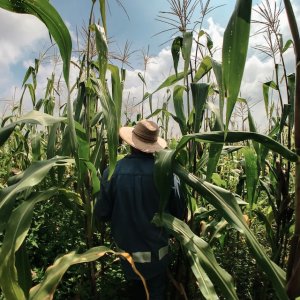Crickets: A Sustainable Solution to Reduce CO2 Emissions

STORY INLINE POST
Globalization and industrialization have increased pollution problems, especially in the livestock industry, which is responsible for 18% of global greenhouse gas emissions. The expansion of the productive frontier leads to deforestation, loss of biodiversity and alteration of the global climate. With global population growth projected for 2050, it is vital to find sustainable alternatives to meet food demand. The Food and Agriculture Organization of the United Nations (FAO) has proposed the use of insects as human food, since they are rich in nutrients, efficient in feed conversion and require fewer resources and space for their rearing compared to livestock animals.
According to the United States National Oceanic and Atmospheric Administration (NOAA), the average temperature of the oceans has reached a worrying level of 21.1 ° C. Experts warn that this represents completely unknown territory from a climactic point of view, which increases the probability of natural catastrophes and unusual weather events, even greater than those already observed. Likewise, the World Meteorological Organization (WMO) has issued alarming estimates. It warns that between 2023 and 2027, there is a 66% probability that the critical threshold of 1.5 degrees of global warming will be exceeded. This figure is especially worrying, since it is unknown what impact it will have and whether it will be possible to reverse it after this critical period. This raises serious questions about the irreversibility of the phenomenon and the magnitude of natural disasters that could occur in this scenario.
Environmental impact refers to the effect that human activity has on the environment and natural processes at a specific place and time. This includes adverse effects on ecosystems, climate and society, as a result of human actions such as the extraction of natural resources, inadequate waste management, the emission of pollutants and change in land use. In particular, the production of conventional proteins (meat, chicken, beef, fish) is associated with significant resource consumption and the generation of pollution. The livestock sector, for example, produces more greenhouse emissions than the transportation sector and is one of the main causes of the degradation of soil and water resources.
Climate change and global warming constitute the greatest threats to global security. For this reason, it is urgent to address this problem and take action to reduce CO2 emissions and mitigate their devastating effects. One of the best options to achieve this is the consumption of cricket flour as a sustainable alternative. Crickets are a rich source of protein, and their production requires fewer resources and generates significantly fewer CO2 emissions compared to conventional livestock farming. By choosing cricket flour as a protein source, we can reduce the environmental impact of our diet and contribute to the reduction of greenhouse gas emissions, thus helping to face the challenge of climate change more effectively.
The versatility of cricket protein allows it to be incorporated into a wide variety of foods, making it a nutritionally rich and environmentally sustainable alternative. Additionally, its production requires fewer resources compared to other conventional protein sources, making it a more environmentally friendly option. With growing interest in food security and environmental sustainability, cricket protein has gained popularity as a viable solution to meet the nutritional challenges of the future.
Cricket protein, with its variable content of between 23% and 65%, depending on the species and its stage of metamorphosis, has become an attractive option to raise the nutritional levels of food without drastically modifying its flavor or texture. For example, the species Acheta Domesticus reaches its highest protein value of 65% during its nymph stage (sixth week). Companies like Wayback Burgers in the United States and Exotic Food in Spain have ventured into the use of cricket protein in their products, offering everything from protein shakes to cookies, chocolates, cereal bars, pasta and candies. In Mexico, Insect Nutritions stands out for producing snacks based on insects for human and animal consumption.
The outlook for the coming years is uncertain, and the uncertainty about the magnitude of the disasters and the possibility of reversing the effects of global warming adds concern to this complex scenario. A collective approach is necessary to address this challenge, analyzing the different sources of protein not as an exhaustive replacement but as a gradual one so that people become more aware of the benefits of insects. At Crick Superfoods, we have focused on ensuring that the consumer knows why we are doing it. That is the reason why they prefer us and that they do not fall into the idea that it is just another nacho; they know that they are positively impacting their health and the environment.
Ramos J. & Pino J. (2007). El consumo de insectos entre los mexicas. Entomología Mexicana. https://historicas.unam.mx/publicaciones/publicadigital/libros/323/323_06_08_consumoinsectos.pdf
Pimentel D. & Pimentel M. (2003). Sostenibilidad de las dietas basadas en carne y vegetales y el medio ambiente. The American journal of clinical nutrition. https://pubmed.ncbi.nlm.nih.gov/12936963/
FAO. (2019). Cómo se preparan los insectos para el consumo humano. FAO. https://www.fao.org/3/i3264s/i3264s00.pdf

















